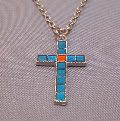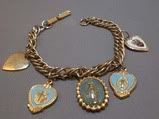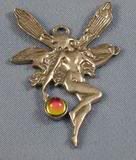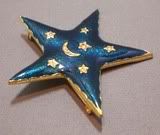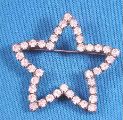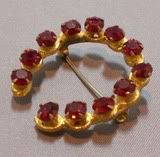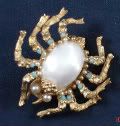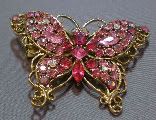Much of the religious themed jewelry I see in the U.S. relates to Christianity. Many devout Christians wear a crucifix or other symbols as a sign of their faith, and perhaps because they believe that they are being watched over. In fact many people of both sexes wear a crucifix at all times under their outer garments for this very reason.
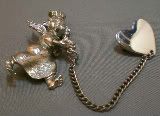 Another common theme is the angel. Angels have become very popular in the past few years as symbols of protection and love. Many people believe that they have a guardian angel. Although Bibilcal angels can't exactly be said to be warm and fuzzy, the popular media, such as television and books, have certainly toned down their image. Now angels not only step in to straighten out people's lives, they can do it with a sense of humor. So angels can be shown watching over babies -- or taking care of someone's heart.
Another common theme is the angel. Angels have become very popular in the past few years as symbols of protection and love. Many people believe that they have a guardian angel. Although Bibilcal angels can't exactly be said to be warm and fuzzy, the popular media, such as television and books, have certainly toned down their image. Now angels not only step in to straighten out people's lives, they can do it with a sense of humor. So angels can be shown watching over babies -- or taking care of someone's heart.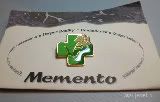 A great deal of religious themed jewelry relates to specific holidays or events. The Lily is the symbol of Easter. The creche, or manger, is another symbol at Christmas time. These symbols remind people that Easter is not just for a trip to Ft. Lauderdale or Christmas only about the gifts. They remind us what these holidays are really all about.
A great deal of religious themed jewelry relates to specific holidays or events. The Lily is the symbol of Easter. The creche, or manger, is another symbol at Christmas time. These symbols remind people that Easter is not just for a trip to Ft. Lauderdale or Christmas only about the gifts. They remind us what these holidays are really all about.Of course there are also items that are related to Christianity, but even more specifically to Catholicism. Items such as St. Christopher medals, sacred heart medals, the head of Christ and miraculous medals are common. They may be combined with the The Lord's Prayer or the Serenity Prayer on he reverse. Sometimes these items have been blessed by priests which grants them even more power.
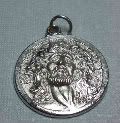
Yes, most people and most jewelry is designed to be worn for purely decorative purposes. It can be the latest fashion trend, such as statement necklaces. But there's also a lot of hidden meaning behind the jewelry we choose wear that says a lot about the person wearing it.
